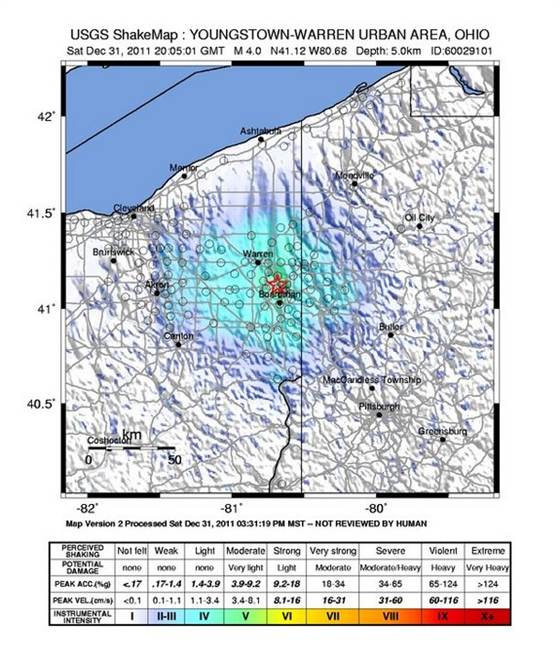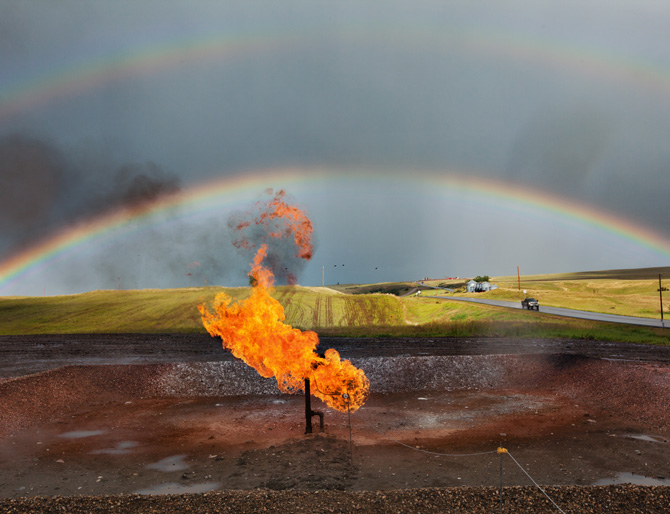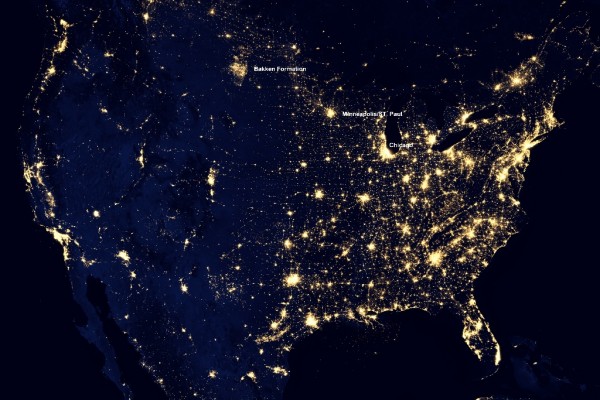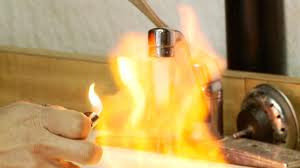Recent reports about the effects of hydraulic fracturing. Note that a critical aspect of this issue is the pressurized disposal of wastewater, which is injected (or perhaps more accurately re-injected) rather than the initial energy (gas) collection.
Mark Drajem, correspondent for Bloomberg News, reporting Fracking Tied to Unusual Rise in Earthquakes in U.S.
A spate of earthquakes across the middle of the U.S. is “almost certainly” man-made, and may be caused by wastewater from oil or gas drilling injected into the ground, U.S. government scientists said in a study.
Researchers from the U.S. Geological Survey said that for the three decades until 2000, seismic events in the nation’s midsection averaged 21 a year. They jumped to 50 in 2009, 87 in 2010 and 134 in 2011.
Those statistics, included in the abstract of a research paper to be discussed at the Seismological Society of America conference next week in San Diego, will add pressure on an energy industry already confronting more regulation of the process of hydraulic fracturing.
“Our scientists cite a series of examples for which an uptick in seismic activity is observed in areas where the disposal of wastewater through deep-well injection increased significantly,” David Hayes, the deputy secretary of the U.S. Department of Interior, said in a blog post yesterday, describing research by scientists at the U.S. Geological Survey.
‘Fairly Small’ Quakes
The earthquakes were “fairly small,” and rarely caused damage, Hayes said.
He said not all wastewater disposal wells induce earthquakes, and there is no way of knowing if a disposal well will cause a temblor.
Last month, Ohio officials concluded that earthquakes there last year probably were caused by wastewater from hydraulic fracturing for natural gas injected into a disposal well.
In hydraulic fracturing — or fracking — water, sand and chemicals are injected into deep shale formations to break apart underground rock and free natural gas trapped deep underground. Much of that water comes back up to the surface and must then be disposed of.
There’s “a difference between disposal injection wells and hydraulically fractured wells,” Daniel Whitten, a spokesman for the America’s Natural Gas Alliance, which represents companies such as Chesapeake Energy Corp. (CHK) and Cabot Oil & Gas Corp. (COG), said in an e-mail. “There are over 140,000 disposal wells in America, with only a handful potentially linked to seismic activity.”
Let’s assume for the moment that seismic activity is linked to disposal wells, infrequently, as Mr. Whitten claims, at a rate of “a handful” for every 140,000 wells. To use round numbers, and use conservative estimates, let’s say “a handful” is five, out of a set of 100,000 (rounding 140,000 down by nearly one-third). That’s fifty seismic events per 1 million disposal wells. The United States “natural gas” ((It’s our understanding that we are, for the most part, talking about methane.)) industry is planning to rapidly and widely expand domestic exploration.
What’s the acceptable safety rate for seismic events caused by methane extraction? If we embark upon an ambitious program, and create one million new disposal wells (and fifty seismic events) per year, how long will it take for us to yield a catastrophic event?
For the moment, we will set aside the other risks: the toxic nature of methane, which is odorless, flammable, and can easily reach 2000°F (1093°C).









